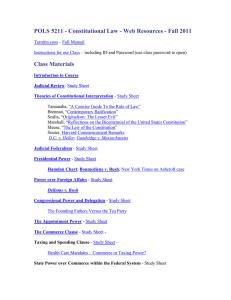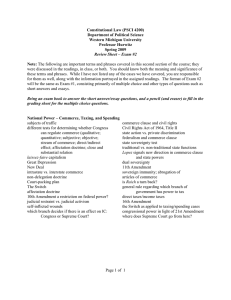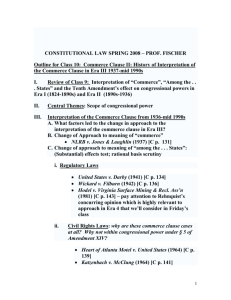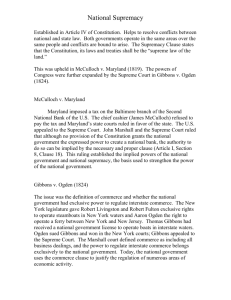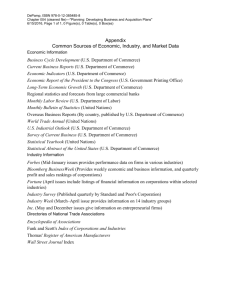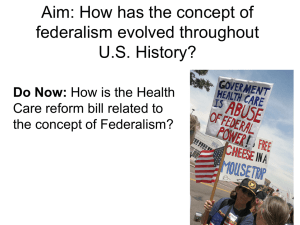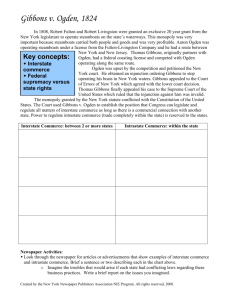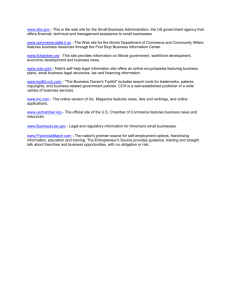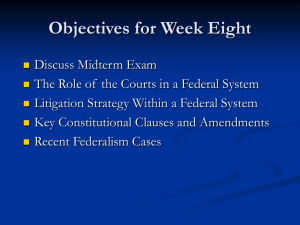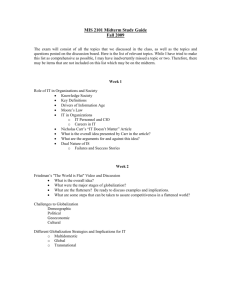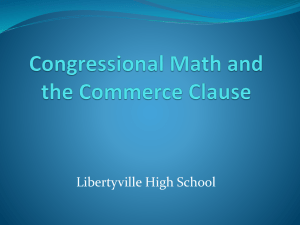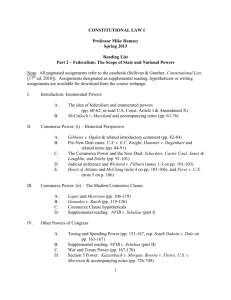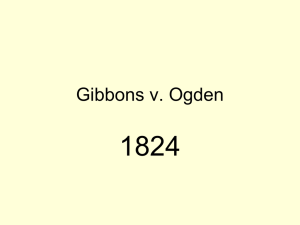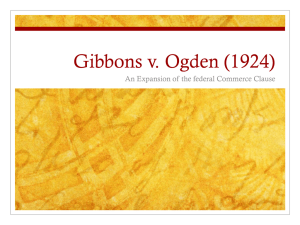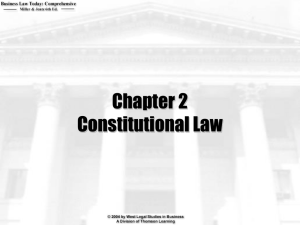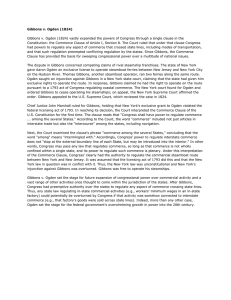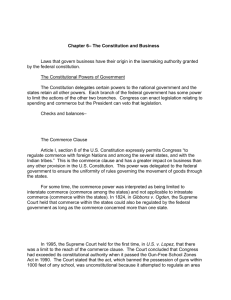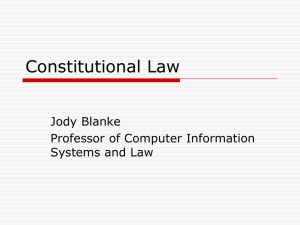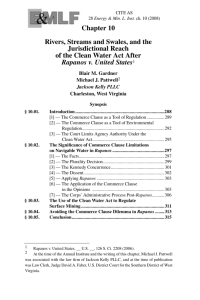Class Outline
advertisement
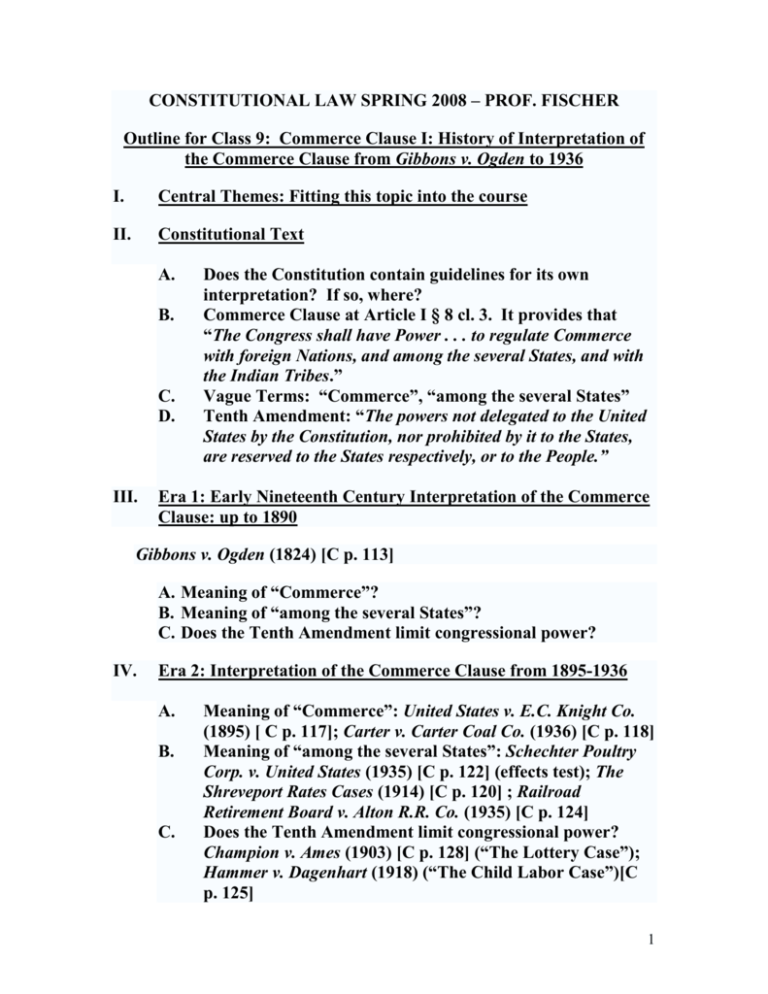
CONSTITUTIONAL LAW SPRING 2008 – PROF. FISCHER Outline for Class 9: Commerce Clause I: History of Interpretation of the Commerce Clause from Gibbons v. Ogden to 1936 I. Central Themes: Fitting this topic into the course II. Constitutional Text A. B. C. D. III. Does the Constitution contain guidelines for its own interpretation? If so, where? Commerce Clause at Article I § 8 cl. 3. It provides that “The Congress shall have Power . . . to regulate Commerce with foreign Nations, and among the several States, and with the Indian Tribes.” Vague Terms: “Commerce”, “among the several States” Tenth Amendment: “The powers not delegated to the United States by the Constitution, nor prohibited by it to the States, are reserved to the States respectively, or to the People.” Era 1: Early Nineteenth Century Interpretation of the Commerce Clause: up to 1890 Gibbons v. Ogden (1824) [C p. 113] A. Meaning of “Commerce”? B. Meaning of “among the several States”? C. Does the Tenth Amendment limit congressional power? IV. Era 2: Interpretation of the Commerce Clause from 1895-1936 A. B. C. Meaning of “Commerce”: United States v. E.C. Knight Co. (1895) [ C p. 117]; Carter v. Carter Coal Co. (1936) [C p. 118] Meaning of “among the several States”: Schechter Poultry Corp. v. United States (1935) [C p. 122] (effects test); The Shreveport Rates Cases (1914) [C p. 120] ; Railroad Retirement Board v. Alton R.R. Co. (1935) [C p. 124] Does the Tenth Amendment limit congressional power? Champion v. Ames (1903) [C p. 128] (“The Lottery Case”); Hammer v. Dagenhart (1918) (“The Child Labor Case”)[C p. 125] 1
